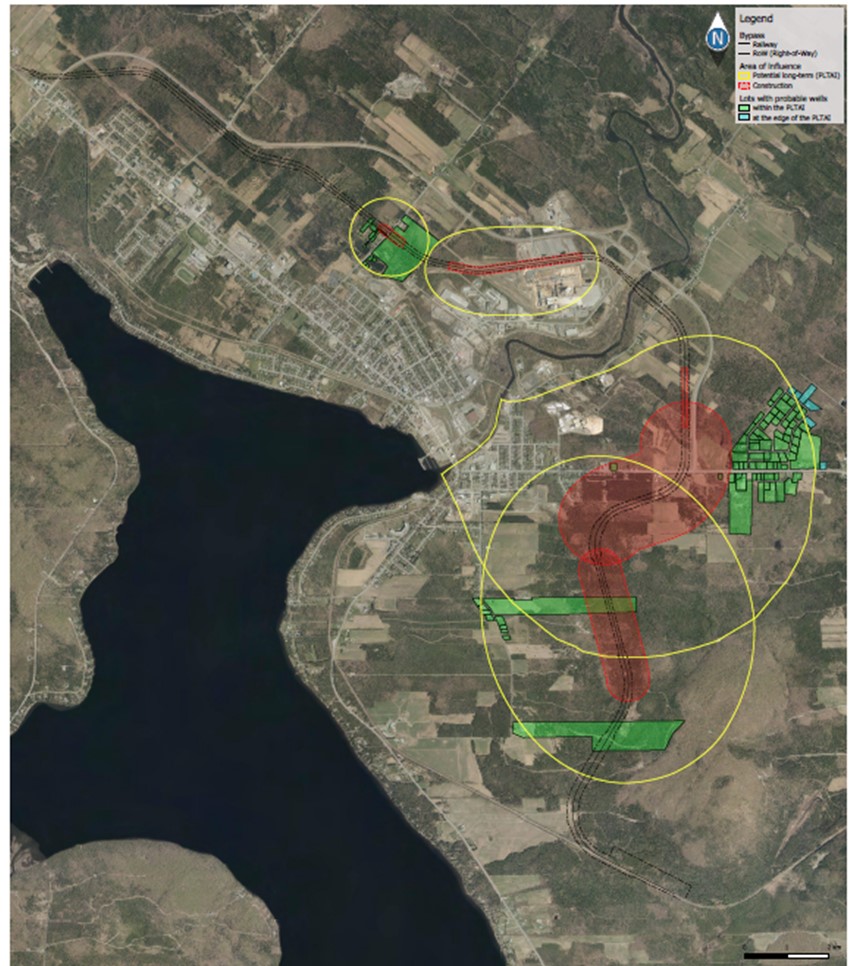Update on the development of mitigation measures
In 2019–2020, consultations with the Bureau d'audiences publiques sur l'environnement identified 138 mitigation measures that were integrated into the project. Transport Canada added 10 new measures to comply with the Species at Risk Act and following the Indigenous consultation process, namely with respect to archaeology.
The geotechnical drilling carried out in 2021 and 2022 enabled the preparation of a hydrogeological report, which is the focus of the current public consultation. Additionally, the report enabled an update to the environmental assessment report, which identifies the project’s potential impacts to the environment, specifically on private water wells and wetlands.
Over the past few months Transport Canada, in collaboration with Canadian Pacific, the city of Lac-Mégantic and the municipalities of Nantes and Frontenac, and through consultations with hydrogeological experts, has studied these reports and developed new mitigation measures.
These new mitigation measures will be presented during public consultation sessions from November 7 to 9, 2022. The public will be able to submit written opinions and comments on these measures until November 25, 2022.
Here is the list of the new mitigation measures that were identified for private water wells. Note that the list of all measures identified to date is located in the discussion guide, which can be found on the following webpage: www.canada.ca/consultation-lac-megantic-bypass.
Mitigation measures for private wells
Transport Canada's commitment to implementing mitigation measures that reduce the project's potential impacts on the environment, private wells and wetlands is clear. In practical terms, it means that measures will be taken to ensure water flow and water quality in residents' wells. Here is a list of the new measures and actions that will be taken under the project's framework.
Inventory and well monitoring program
- All private wells located in the project’s potential long-term area of influence will be inventoried (the areas in yellow on the map), located beyond the ones within 200 m of the right-of-way that were initially identified in 2020.
- In addition to the list of inventoried wells, a monitoring program will be put in place for wells considered at-risk. The monitoring will include recording water-level variations in wells using sensors and regular sampling to maintain drinking water quality.
- At-risk wells will be monitored before, during, and after construction of the bypass as long and as often as needed until the water table naturally stabilizes.
- New wells will be drilled (observation wells) and equipped with instruments to monitor water levels in at-risk areas. Some wells will be located in a neighbouring watershed, far from the project, in order to compare data over the seasons.
- The data from the geotechnical and hydrogeological studies will be made available to the city of Lac-Mégantic and the municipalities of Nantes and Frontenac in order for them to update their analysis of the vulnerability of drinking water sources as per regulations.
Measures to ensure the flow and quality of drinking water
- Intervention thresholds for the level and quality of groundwater will be established. These thresholds will make it possible to quickly determine how much the water level in the wells has decreased and will help determine the measures needed to ensure a constant supply of drinking water to citizens.
- If there are problems with water flow or the quality of water due to the construction work, new wells will be drilled at no cost to the property owners.
- Note that replacement wells could be deeper in order to provide a sufficient quantity of water for the property owner. In such cases, the replacement of the well may also require the replacement of pumping equipment and a new connection to the residence, at no cost to the property owner.
- If drinking water criteria are exceeded or if water quality has deteriorated as a result of the construction work, water treatment systems could be installed as needed, at no cost to the public.
- If a well needs to be replaced or if water quality is compromised, drinking water will be distributed free of charge until the situation is resolved.
- In order to prepare for any scenario, new mitigation measures could be identified and implemented under the monitoring program to ensure that the public has access to drinking water for the duration of the construction work.
